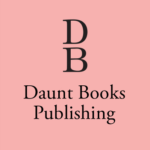On Finding the Perfect Reader
Who do we allow inside our creative process—those fragile early pages of a manuscript—when our thoughts may be unformed, our ideas only glimmers, our characters mere shadows of who they may some day become? Do we let anyone in? And if so, how do we choose?
Over the years, I have tried everything. I’ve under-shared, I’ve over-shared. I’ve chosen wisely and unwisely. I’ve learned to be careful, very careful. Showing our work when it’s in process reminds me of the first time I left my newborn son for a few minutes because I had to run across the street to Duane Reade to buy diapers. I left him in the living room of my apartment in the arms of a dear friend—and a woman who knew her way around babies—but as I rushed across the street, I felt stripped, naked, missing something essential (a limb?), a four-alarm fire going on inside of me. He was supposed to be with me—attached to me—and it felt unnatural to be out in the world—even for a moment—without him. When I returned just a few minutes later, everything was fine. It was a revelation. There was my baby, sound asleep against my friend’s shoulder.
We need to know when to ask for help. When we need another set of eyes. An opinion. And the choosing of that person is no simple thing. The damage—if there is damage—can be lasting, if not irrevocable.
So how do we identify our readers—especially our early readers? There is a point in the writing of a book when it becomes hardy and strong, when it can withstand critiquing because it has already become real. It has a skeleton, a heart, a pulse. Every book—it’s safe to say, every single book you ever will read—has the thumbprints of others on it. An editor, an agent, another writer, members of a workshop, a discerning friend. But sharing the work too early—or with the wrong person—can destroy it. All we have is our own internal music, the ocean sound (as William Maxwell once wrote) of a seashell pressed to our ears. But we must be quiet, and listen closely. We must preserve that intimacy for as long as possible. An uncaring, callous, unthinking or otherwise irresponsible comment from the wrong reader can silence that music, perhaps forever.
First, be sure you really need to show the work, and aren’t just being impulsive, anxious, in need of instant gratification. Can something be solved through sharing the work? Have you hit a wall and stayed there for a while, banging your head against it? Then maybe you’re ready. And if you’re sure you’re ready, here are some types of readers to avoid:
The friend who will tell you whatever she thinks you want to hear. The friend who is secretly competitive. Or envious. The friend who doesn’t know how to talk to writers (a/k/a the friend with the bad bedside manner). The friend who will unwittingly impose her own vision on your work. The friend who isn’t a friend.
A good reader is not unlike a good shrink—and a manuscript is the inner life of the writer. The meaning is already buried (or not so buried) in those early pages, and it’s there to be teased out, to be understood, to be discussed and illuminated. You know you’ve made a good choice when you walk away from an inspired creative dialogue, on fire, excited, the pages more alive for having been shared and understood.


















